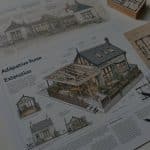In our increasingly modern and digital world, community mapping projects are emerging as a refreshing way to foster physical activity and enrich our understanding of local environments. These projects inspire a deeper appreciation for our communities while creating an active and dynamic learning experience. They encourage us to move, explore, and contribute to a shared understanding of our physical spaces. But how does this process work? And what are the tangible benefits of engaging in such activities? In this article, we delve into these questions and unravel the fascinating interplay between community mapping, physical activity, and environmental knowledge.
Community Mapping: An Overview
Community mapping is a powerful tool that draws on the collective knowledge and experiences of local residents to create a detailed representation of a community. This collaborative process not only fosters social cohesion and mutual understanding, but also encourages physical activity as participants explore their environment, gathering data and information.
Also to discover : Can The Use of Haptic Feedback Devices in Virtual Training Environments Enhance Skill Acquisition in Surgeons?
The essence of community mapping lies in its participatory nature. It is not a task undertaken by a solitary cartographer, but a collective effort that involves walking, observing, photographing, measuring, and above all, communicating. By actively engaging in these tasks, participants are naturally drawn into a state of physical activity.
The Interplay between Community Mapping and Physical Activity
Community mapping projects necessitate physical movement. The process involves surveying the community, identifying key landmarks, and physically mapping out the area. This could mean walking or cycling around the community, hiking up hills to get a better vantage point, or even canoeing along local waterways.
Also to discover : What Are the Impacts of Biodynamic Farming Practices on Soil Health and Nutritional Content of Food?
Participants often find themselves moving more than they anticipated – they become explorers, surveyors and cartographers all at the same time. Moreover, the nature of these activities often requires a certain level of physical fitness or stamina, encouraging participants to adopt a more active lifestyle to fully engage in the project.
Physical activity, in turn, has many well-documented benefits. It contributes to improved cardiovascular health, stress reduction, increased energy levels, and better overall well-being. Therefore, by engaging in community mapping, participants not only become active contributors to the project but also benefit personally through enhanced physical health.
The Role of Community Mapping in Promoting Environmental Knowledge
In addition to promoting physical activity, community mapping projects are a rich source of local environmental knowledge. As participants traverse their community, they acquire firsthand knowledge about the local flora, fauna, and geological features. They learn about the importance of preserving local ecosystems and the role they play in maintaining the balance of nature.
Moreover, community maps often highlight areas of environmental concern that may have been previously overlooked, such as pockets of pollution, endangered habitats, or areas prone to natural disasters. In the process, participants develop a deeper understanding of environmental issues and become more aware of the impact of human activities on their local environment.
The Impact of Community Mapping on Community Engagement and Environmental Stewardship
Community mapping projects also serve as a platform for promoting community engagement and environmental stewardship. The process of creating a map cultivates a sense of ownership and responsibility among participants, fostering a greater commitment to the well-being and sustainability of their community.
As participants gain more knowledge about their local environment, they are likely to feel a stronger connection to it. This connection can manifest as increased involvement in local environmental initiatives, such as clean-up drives, tree planting activities, or advocacy for sustainable practices.
In effect, community mapping projects nurture informed citizens who are not only physically active but are also deeply invested in their local environment. The connection they foster between the community’s members and their surroundings is both rewarding and powerful.
Community Mapping as a Tool for Sustainable Development
The information gathered from community mapping projects can greatly inform sustainable development efforts. The detailed, localized knowledge that such projects provide is invaluable in planning and implementing strategies to enhance the sustainability of communities.
Community maps often reveal patterns of resource use, areas of environmental concern, and the impact of human activities on the local environment – valuable insights that can guide decision-making on various issues, including land use planning, resource management, and disaster preparedness.
By engaging in community mapping, citizens are directly involved in shaping the future of their community, actively contributing to its sustainability while reaping the benefits of physical activity and increased environmental knowledge.
In essence, community mapping demonstrates the power of collaborative effort and engagement. It compels us to move, to explore, and to learn – fostering a healthy, active lifestyle and a deep-seated respect for our local environment. Whether you’re an urban dweller seeking to understand your city better or a rural resident keen to preserve the natural beauty of your community, engaging in community mapping could be a rewarding and enlightening experience.
Community Mapping Projects: Bridging the Gap between People and their Environment
Community mapping seems to be an effective solution to bridge the gap between individuals and their local environment. When people participate in these mapping projects, they start to develop a strong bond with the physical space they inhabit. The act of exploring, documenting, and sharing their findings about their community stirs a sense of connection and appreciation for their environment.
Often, people are unaware of the intricate details of their surroundings. For example, they may not realize the diversity of plant and animal species in their local park, or they may overlook the historical significance of certain buildings or landmarks. Community mapping projects bring these hidden treasures to light, enhancing people’s appreciation for their environment and fostering a sense of belonging and pride in their community.
In addition, community mapping can highlight environmental issues that need attention. Having this information, community members can take proactive steps towards environmental conservation. For instance, if a mapping project reveals a high concentration of litter in a particular area, it may inspire a neighborhood clean-up. Or, if it uncovers a habitat for an endangered species, it may lead to increased protection and conservation efforts.
Overall, community mapping can be a potent tool for promoting environmental stewardship and sustainability. By actively engaging people in the exploration and documentation of their local environment, these projects empower them to become advocates for their community’s physical and environmental health.
Conclusion: Community Mapping – A Pathway to Active Living and Environmental Awareness
In summary, community mapping projects offer a unique and engaging way for people to interact with their local environment while promoting physical activity. As participants explore and document their surroundings, they inevitably engage in physical activity. This not only carries numerous health benefits but also makes the process of learning about their community more dynamic and enjoyable.
Moreover, these projects serve as a valuable source of local environmental knowledge, fostering a deeper understanding and respect for the natural world. They provide firsthand information about local flora, fauna, and geographical features, and highlight areas of environmental concern that need attention.
Beyond individual benefits, community mapping projects enhance community engagement and environmental stewardship, leading to more sustainable communities. They foster a sense of ownership and responsibility among participants, encouraging them to take an active role in the well-being and sustainability of their environment.
So, whether you’re an urban dweller seeking to understand your city better, a rural resident keen to preserve the natural beauty of your community, or an educator looking for ways to engage students in active learning, community mapping projects could be a rewarding and enlightening experience. They provide a refreshing way to stay physically active, learn about your local environment, and contribute to the sustainability of your community.






